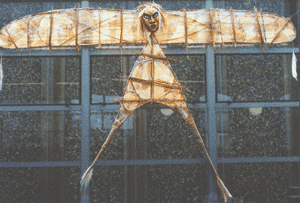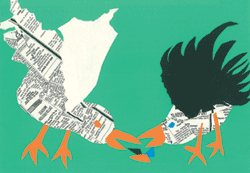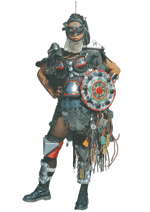The Project
directors acknowledge the vital support and contributions of many people
to this report, including:
• the
very dedicated staff of the Educational Assessment Research Unit
• Lisa
Rodgers and other staff members of the Ministry of Education
• members
of the Project’s National Advisory Committee
• members
of the Project’s Arts Advisory Panel
• principals
and children of the schools where tasks were trialled
•
principals, staff and Board of Trustee members of the 252 schools
included in the 2003 sample
•
the 2878 children who participated in the assessments and their parents
•
the 100 teachers who administered the assessments to the children
•
the 45 senior tertiary students who assisted with the marking process
•
the 170 teachers who assisted with the marking of tasks early in 2004.
New Zealand’s National
Education Monitoring Project commenced in 1993, with the task of assessing
and reporting on the achievement of New Zealand primary school children
in all areas of the school curriculum. Children are assessed at two
class levels: year 4 (halfway through primary education) and year 8
(at the end of primary education). Different curriculum areas and skills
are assessed each year, over a four-year cycle. The main goal of national
monitoring is to provide detailed information about what children know,
think and can do, so that patterns of performance can be recognised,
successes celebrated, and desirable changes to educational practices
and resources identified and implemented.
Each year, random samples
of children are selected nationally, then assessed in their own schools
by teachers specially seconded and trained for this work. Task instructions
are given orally by teachers, through video presentations, on laptop
computers, or in writing. Many of the assessment tasks involve the children
in the use of equipment and materials. Their responses are presented
orally, by demonstration, in writing, in computer files, or through
other physical products. Many of the responses are recorded on videotape
for subsequent analysis.
The use of many tasks with both year 4 and year 8 students allows comparisons
of the performance of year 4 and 8 students in 2003. Because some tasks
have now been used twice, in 1999 and again in 2003, trends in performance
across the four-year period can also be analysed and reported.
In 2003, the first
year of the third cycle of national monitoring, three areas were assessed:
science, visual arts, and the use of graphs, tables and maps. This report
presents details and results of the assessments of students’ knowledge,
skills and ideas in the visual arts. It is important to note that, for
the purposes of this report, ‘art’ is understood to be visual
art.
| ASSESSING
THE VISUAL ARTS |
Visual Arts is that part
of the curriculum which offers opportunities for developing abilities
of personal and social expression through a range of media, forms and
techniques. Education in the visual arts is also concerned with developing
an appreciation and understanding of the art of others, the ways art
works are looked at, thought about, used and valued. A framework for
visual arts education and its assessment is presented in Chapter
2. This framework lists important approaches, skills and
attitudes appropriate to the two main content strands of making art
and knowing about art.
Chapter
3 examines achievement relating to making art. The six
tasks used in this section covered processes of observational drawing,
creative expressive picture making, printmaking and clay modelling.
Averaged across all six tasks,
the mean score on the six point global rating scale (0 low – 5
high) for year 4 was 1.3 compared to 2.0 for year 8 students. This result
indicates some overall improvement of skills in the four-year period.
The largest gap in the mean global ratings occurred in the observational
pencil drawing task where the difference between year 4 and year 8 was
1.0. The smallest gap occurred in the printmaking task where the difference
was 0.2.
Two trend tasks were administered to year 4 and year 8 students in both
the 1999 and 2003 assessments. In the painting task there was a very
small improvement in the mean global rating at year 8 between 1999 and
2003, whereas there was a very small decline at year 4. In the collage
task there were small declines in the mean global ratings between 1999
and 2003 at both year 4 and year 8. These small differences amount to
little change of any note over the four-year cycle.
Chapter
4 examines achievement relating to responding to art. The
12 tasks reported in this chapter involved students responding to a
variety of art works, most of which were represented in photographic
reproductions. The tasks asked students to examine and describe content,
style and imagery. They also asked students to identify media and processes
used in the making of artworks, and to express a personal response to
observed images. Eleven of the tasks were administered in one-to-one
interviews, and one in a team approach.
While it is not appropriate
to collapse data from across all 12 responding tasks for purposes of
comparing the overall performances of year 4 and year 8 students, the
results in all tasks show a general pattern of improvement in knowledge
and skills from year 4 to year 8. In many instances this improvement
is quite modest.
The two trend tasks (Warriors and
Soldiers, and Art Objects)
were administered to year 4 and year 8 students in both the 1999 and
2003 assessments. While the results for Warriors and Soldiers show a
few minor differences from 1999 to 2003, particularly at year 8, the
general pattern of scores has been maintained. The results for Art Objects
generally show a number of small differences from 1999 to 2003 at both
year 4 and year 8. Overall, the pattern of performance has changed little
over the four-year period.
Chapter
5 presents the results of the visual arts survey, which sought information
from students about their curriculum preferences, their engagement in
visual arts activities, and their perceptions of their achievement and
potential in the visual arts.
Students were asked to select their three favourite school subjects
from a list of 14 subjects. For year 4 students, visual arts was the
second most popular preference (after physical education). With drama
and dance added to the subject list used in the 1999 survey, percentage
preferences are not directly comparable, but it is noteworthy that visual
arts has dropped in the “top three” support from 80 percent
of students in 1999 to 41 percent of students in 2003. In the corresponding
results for year 8 students, visual arts was the third most popular
subject (following physical education and technology). The number choosing
visual arts in 2003 was 24 percent lower than the percentage choosing
“art” in 1999.
Year 4 results suggest that visual arts remains a popular activity,
with about 75 percent of students choosing the highest rating for their
enjoyment of visual arts at school, and wanting more. At year 8, the
2003 results are similar to those for 1999. There appear to be small
declines in the popularity of visual arts at school and in the desire
for additional art at school, but about 50 percent still give high ratings
on both issues (higher than for most subjects in other NEMP surveys
at year 8 level).
At year 4, the most notable changes from the 1999 results were moderate
increases in the percentages of students who said they didn’t
know how good they were in visual arts, or how their teacher or parent
viewed their ability in the visual arts.
Computer graphics was included in the survey for the first time in 2003.
Thirty-six percent of year 4 students and 29 percent of year 8 students
reported using this medium at school “heaps” or “quite
a lot” – more than printmaking, collage, carving, model
making, clay, and fabrics, with which experience was quite limited.
Chapter
6 reports the results of analyses that compared the performance
of different demographic subgroups. School size, school type (full primary
or intermediate), geographic zone and community size did not seem to
be important factors predicting achievement on the visual arts tasks.
However, there were statistically significant differences in the performances
of students in low, medium and high decile schools on a third of the
tasks at year 4, and on half of the tasks at year 8. These differences
predominated in the responding tasks.
For the comparisons of boys with girls, Pakeha with Mäori, Pakeha
with Pasifika students, and students for whom the predominant language
at home was English with those for whom it was not, effect sizes were
used. Effect size is the difference in mean (average) performance of
the two groups, divided by the pooled standard deviation of the scores
on the particular task.
For year 4 students,
the difference between boys and girls across the 18 tasks was negligible.
There were statistically significant differences on two of the 18 tasks:
girls performed better on one, boys on the other.
For year 8 students, girls performed a little better than boys, with
an average effect size of 0.09. In other words, on average girls scored
about one tenth of a standard deviation higher than boys – a very
small advantage. There were statistically significant differences on
three of the 17 tasks, with girls performing better on all three tasks.
In earlier NEMP reports, the performance of Mäori students was
compared to that of all other students. Starting with the 2003 reports,
three groups are now distinguished: Mäori students, Pasifika students,
and all other students (described as Pakeha students). This change prevents
satisfactory direct comparisons with the results from 1999.
Year 4 and year 8 Pakeha students scored statistically significantly
higher than Mäori students on 39 percent of tasks (all of which
were responding to art tasks at year 4, while one was a making task
and six were responding tasks at year 8). Average effect sizes of 0.31
for year 4, and 0.27 for year 8 show moderate differences between the
achievement of Pakeha and Mäori students. The differences were
smaller on making tasks than on responding tasks.
Year 4 and year 8 Pakeha students scored statistically significantly
higher than Pasifika students on 44 percent of tasks (all of which were
responding tasks at year 4, while two were making and six were responding
tasks at year 8). Average effect sizes of 0.37 for year 4 and 0.42 for
year 8 show moderate to larger differences between the achievement of
Pakeha and Pasifika students, comprised of small differences on making
tasks, and large differences on responding tasks.
Compared to students for whom the predominant language at home was English,
students from homes where other languages predominated scored statistically
lower on 22 percent of year 4 tasks, increasing to 33 percent for year
8 tasks. The corresponding mean effect sizes were 0.26 for both levels,
which can be described as moderate. There were small differences on
making tasks and moderate to large differences on responding tasks.
|



